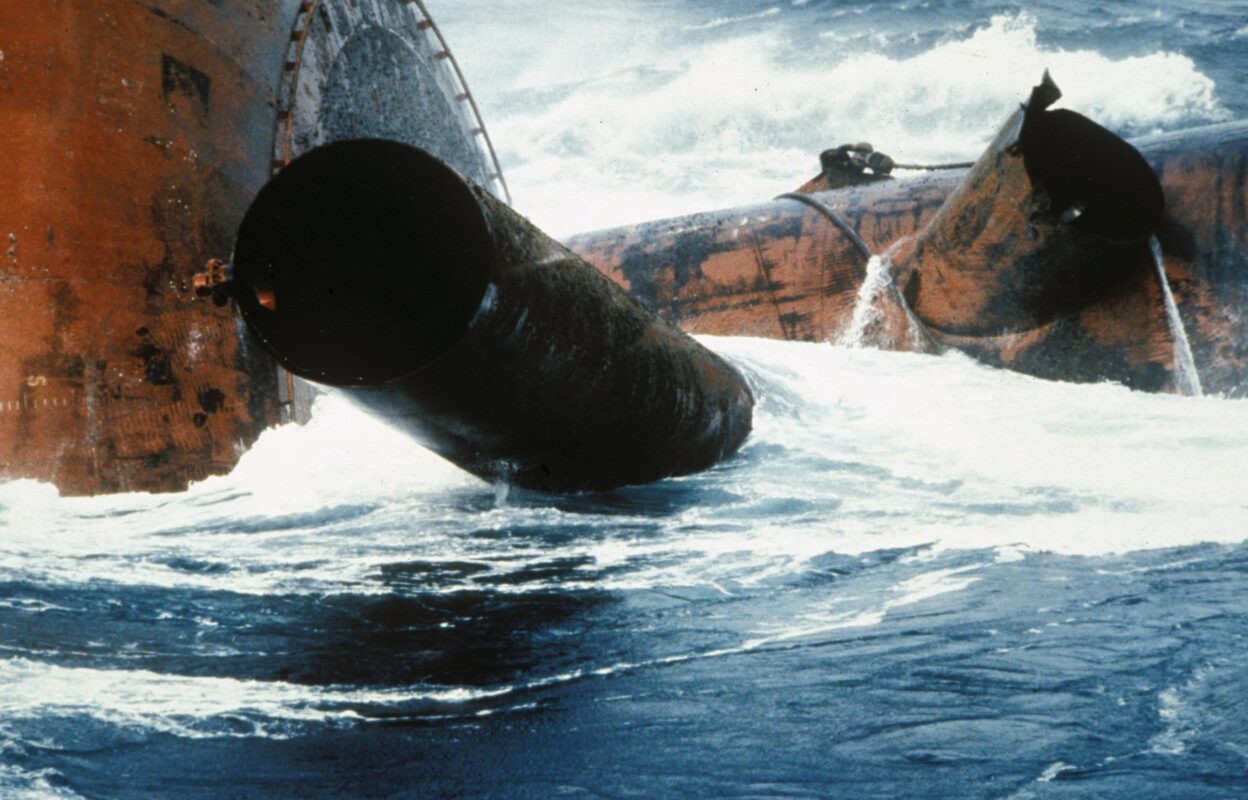Surviving the Kielland accident – Svendsbøe

– They come to visit me at night, says Svendsbøe when he talks about the accident 20 years after it happened. The colleague who was badly injured in the waves those 20 years ago, was one of those he never got to see again.
123 people died when the “Alexander L. Kielland” platform overturned and sank on the Ekofisk field on 27 March 1980. Svendsbøe was one of the lucky ones to survive the dramatic capsizing. But he will never be rid of the images of his colleagues fighting for their lives in the foamy sea. They follow him in his nightmares.
– It hurts so much inside. Like a big bad lump, says the former North Sea worker.
The bang
There was a storm in the North Sea on 27 March 20 years ago, a storm with gusts streching into hurricane territory. Svendsbøe was sitting in his cabin patching eel traps. The time was 18:33 on Thursday evening. A violent boom followed by major tremors in the platform disrupted the work. A wave, he thought. Then the platform started tipping.
– We sailed out into the hall, he says. Together with his cabinmates, he crawled to the lifeboats. The whole platform was listing so much that it was almost impossible to move. Svendsbøe decided not to join the lifeboat. A glance downwards convinced him that the lifeboat would be smashed against the platform when it hit the water.
But the workers in the lifeboat were lucky. The release mechanism did not work. Instead, the lifeboat was left with the platform down as it sank. Well under water, the mechanism worked and they were free. But several other lifeboats were smashed against the sinking platform.

Fighting for his life
Svendsbøe also accompanied the platform down. He was whirled around downwards for a long time, before the life vest pulled him up. When he came up, he barely managed to gasp in a few mouthfuls of air, before a blow sent him under water again. One of the large pontoons on the shaft had hit him in the back.
As the platform sank, he saw colleagues being struck to death by platform parts as they fell off. A wire swept with full force over the oil workers and split a man in two. On the Edda production platform nearby, the workers watched the disaster unfold, unable to help.
– When we arrived at the hospital, there was a doctor who was amazed that so few were injured. Those who broke a finger couldn’t make it, says Svendsbøe. He barely managed to get into a life raft, and was picked up by a helicopter after three and a half hours.
Kåre Svendsbøe loved being both in and on the sea. Now the former sailor prefers to go out in calm weather. Seven oil workers from Aksdal in Rogaland traveled to Ekofisk in March 20 years ago. Only Svendsbøe returned.
– I never received any offer of assistance. Not the family either, he says quietly.
He admits that he is bitter about 20 years on disability benefits. He still wakes up from nightmares where work colleagues have dragged him by the arms and legs to save themselves from the lethal waves. The “Sleipner” accident (The accident with the speedboat “Sleipner”) has led to more frequent nightmares.
– I feel for those who fought in the waves, he says. He believes that much has improved since the “Alexander L. Kielland” accident. Survivors and bereaved receive help, and safety has improved.
Norwegian National Broadcaster NRK radio: The Alexander Kielland accident Weekend – Dagsnytt 1230
Per Ståle Lønning depicts the atmosphere in Stavanger and Rogaland after
The Alexander Kielland accident in the North Sea. Interview with survivors Thorleif Endresen and Ester Endresen from Haugesund.
